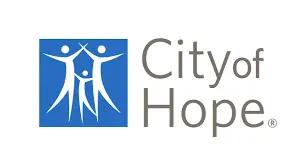
cfDNA & CTCs for Early Detection, Treatment Monitoring, and Personalized Medicine

Key Takeaways
- Liquid biopsy leverages cfDNA and CTCs for personalized cancer diagnostics, offering early detection, staging, and monitoring of therapeutic efficacy and resistance mechanisms.
- Compared to traditional biopsies, liquid biopsies are cost-effective, repeatable, and address tumor heterogeneity, with applications extending to various body fluids.
The latest research on circulating tumor DNA and circulating tumor cells isolated through liquid biopsies is revolutionizing cancer care by enabling early detection, treatment monitoring, and personalized medicine strategies.
The emerging field of liquid biopsy utilizing cell-free DNA (cfDNA) and circulating tumor cells (CTCs) has opened new avenues for cancer diagnostics over the past decade with important clinical opportunities for personalized medicine in oncology. Liquid biopsies have several clinical applications, including early cancer detection, improved cancer staging, early detection of relapse, personalized treatment based on therapeutic target mutations, real-time monitoring of therapeutic efficacy, monitoring of tumor evolution with treatment, and identification of resistance mechanisms.
The cfDNA is fragmented DNA released from cells through apoptosis, necrosis, and active secretion from the tumor. Tumor-related cfDNA can be distinguished from normal cfDNA fragments through the presence of epigenetic or genetic alterations, such as tumor-specific methylation markers and somatic mutations. The CTCs are released into blood by a tumor and travel through the bloodstream or lymphatic system to other areas of the body, having the potential to cause distant metastases. Since most cancers are of epithelial origin, an epithelial molecular marker like epithelial cell adhesion molecule (EpCAM) can be used for CTC detection.
There are several benefits of liquid biopsy over conventional surgical tissue biopsy. Liquid biopsies havelower procedural costs, are easily repeatable, are more reliable, and can overcome heterogeneity of tumor cells. The concept of liquid biopsy is not only limited to blood but can be expanded to other body fluids, including urine, cerebrospinal fluid, bone marrow, or sputum.
Early detection of cancer is key for improved quality of life and survival and to reduce the financial burden of cancer treatments, which are greater at later stage of detection. Despite being the second leading cause of death worldwide, many cancers still do not have screening programs and many people may not qualify for screening based on screening guidelines endorsed by the US Preventive Services Task Force. Currently, screening tests are only available for 5 different cancers, including mammography for breast cancer, Pap smear for cervical cancer, prostate-specific antigen for prostate cancer, low-dose CT scan for lung cancer, and colonoscopy for colon cancer. Most of the cancers that account for two-thirds of cancer mortality still do not have screening tests available, such as bladder, ovarian, pancreas, liver, and plasma cell cancers.
There is opportunity for improvement of cancer screening with liquid biopsy. The screening tests used in the general population must have high sensitivity to detect potentially lethal cancer and biologically significant cancers, as well as high specificity to avoid false positives. The screening test must be easy to obtain with rapid turnaround time with high throughput technology.
The liquid biopsy for multi cancer early detection utilizes ultrasensitive assays that target mutations, copy-number aberrations, or methylation on cfDNA. The use of liquid biopsies in early detection is based on discovery strategy, validation for early detection, and prediction of organ system involved. It is rightly described as a marriage between next-generation sequencing microfluidX and droplet-based reverse-transcriptase polymerase chain reaction to isolate single DNA to detect mutation or methylation and artificial intelligence approaches to interpret data meaningfully.
This principle has now been studied across different trials, such as the Galleri test (Grail, US), PanSeer (Singlera Oncology, US), CancerSEEK (Exact Sciences, US), and the CCGA (Circulating Cell-Free Genome Atlas) Study (NCT02889978). These tests have demonstrated high specificity and sensitivity for early detection of cancers. The PanSeer liquid biopsy test was able to identify 5 types of cancer, providing evidence of about 4 years of lead time for detection of cancer with liquid biopsy prior to conventional diagnosis. CancerSEEK examined 8 cancer types (ovary, liver, stomach, pancreas, esophagus, colorectum, lung, or breast). The test gave a specificity of > 99% with sensitivities of 43%, 73%, and 78% for stages I, II, and III respectively. The CCGA study is a prospective, multicenter, observational study with collection of deidentified biospecimens and clinical data from at least 15,000 participants followed over a period of 5 years.
Liquid biopsy is a cost-effective technique for screening due to its diagnostic efficiency with a potential to diagnose and cure early stage cancers. While the technology of liquid biopsy is promising, it poses certain challenges in the real-world setting. It is unclear how long a negative test remains valid for. Perhaps, a more longitudinal follow-up in the CCGA study provides answers.
It also remains unclear about the appropriate follow-up based on the results of screening tests. A thorough counseling of patients by their physicians remains of paramount importance prior to obtaining screening tests due to the emotional conundrum related to test results and the necessary follow-up. To date, this technology remains investigational and more data is awaited from clinical trials for the utility of liquid biopsy as screening tool.
We vision the liquid biopsies provide for an efficient diagnostic platform with several other diagnostic tools that can be used for deciphering anatomical details for a personalized therapeutic approach for each individual going forward.








































